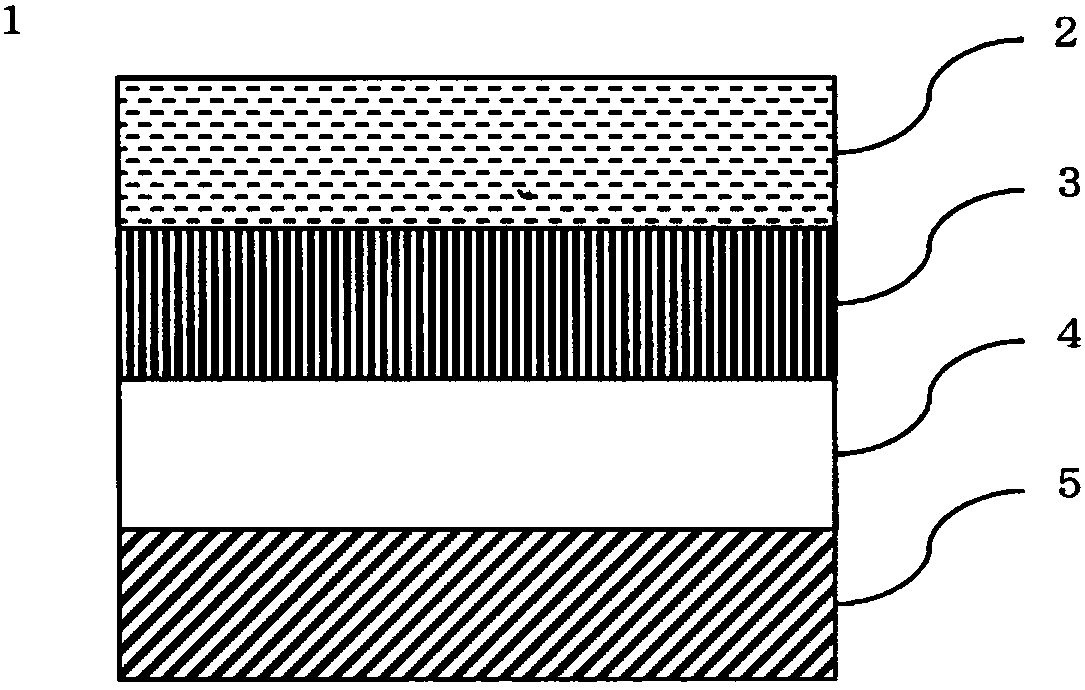Glass substrate suitable for cover glass, etc., of mobile display device
A technology of glass substrates and substrates, which is applied in the field of glass substrates, can solve problems such as reduced smoothness and reduced adhesion of fluorine coatings, and achieves the effects of good manufacturing efficiency, improved transmittance, and high scratch resistance
- Summary
- Abstract
- Description
- Claims
- Application Information
AI Technical Summary
Problems solved by technology
Method used
Image
Examples
Embodiment
[0084] Hereinafter, examples of the present invention will be shown and the present invention will be specifically described, but the present invention should not be limitedly interpreted by the following examples. The meanings and measuring methods of the following abbreviations are as follows.
[0085] TEOS: Tetraethoxysilane
[0086] UPS: 3-ureidopropyltriethoxysilane
[0087] MeOH: Methanol
[0088] EtOH: ethanol
[0090] PGME: Propylene Glycol Monomethyl Ether
[0091] HG: hexanediol
[0092] BCS: Ethylene glycol monobutyl ether
[0093] AF: Made by FT-Net Co., Ltd., "Furuo Marto P-5425"
[0094] [Determination method of residual alkoxysilane monomer]
[0095] The residual alkoxysilane monomer in the polysiloxane solution was measured by gas chromatography (hereinafter referred to as GC). GC measurement was performed under the following conditions using Shimadzu GC-14B (manufactured by Shimadzu Corporation).
[0096] Column: capil...
manufacture example 1
[0108] MeOH (27.25g) which is a solvent, and TEOS (32.98g) which are alkoxysilanes were injected|thrown-in and stirred in the 4 neck reaction flask equipped with the reflux tube.
[0109] Next, a mixture of MeOH (11.23 g) as a solvent, 6% nitric acid solution (8.75 g) as an acid, and water (15.0 g) was added dropwise, followed by stirring for 30 minutes. After stirring, it refluxed for 2 hours, and then added 92% UPS (2.39g) and MeOH (2.39g) as an alkoxysilane, refluxed for 30 minutes, and left to cool to room temperature. After standing to cool, MeOH (70.67g) was injected|thrown-in as a solvent, and the solution (A) of polysiloxane was prepared.
[0110] When this polysiloxane solution was measured by GC, the alkoxysilane monomer was not detected.
Embodiment 1
[0116] The polysiloxane solution (A) (50g) obtained in Production Example 1 was diluted with PGME (30g), HG (10g), BCS (5g) and PB (5g) to prepare a coating solution for film formation (A1 ).
[0117] On a DLC layer of a glass substrate (thickness: 0.7 mm) formed with a DLC layer having a thickness of 100 nm by a sputtering method, the coating liquid (A1) for coating film formation was applied with a spin coater to form a coating film. Next, the glass plate on which the coating film was formed was dried on a hot plate at 80° C. for 3 minutes, and then cured in a clean oven at 300° C. for 30 minutes to obtain a glass substrate having a coating film (intermediate layer) with a thickness of 100 nm.
[0118] AF was applied on the intermediate layer of the glass substrate with a spin coater to form a fluorine coating film with a thickness of about 10 nm so that the contact angle became about 113°. Next, after drying at 80 degreeC for 3 minutes on a hot plate, it hardened at 170 degr...
PUM
| Property | Measurement | Unit |
|---|---|---|
| Thickness | aaaaa | aaaaa |
| Thickness | aaaaa | aaaaa |
Abstract
Description
Claims
Application Information
 Login to View More
Login to View More - R&D
- Intellectual Property
- Life Sciences
- Materials
- Tech Scout
- Unparalleled Data Quality
- Higher Quality Content
- 60% Fewer Hallucinations
Browse by: Latest US Patents, China's latest patents, Technical Efficacy Thesaurus, Application Domain, Technology Topic, Popular Technical Reports.
© 2025 PatSnap. All rights reserved.Legal|Privacy policy|Modern Slavery Act Transparency Statement|Sitemap|About US| Contact US: help@patsnap.com


